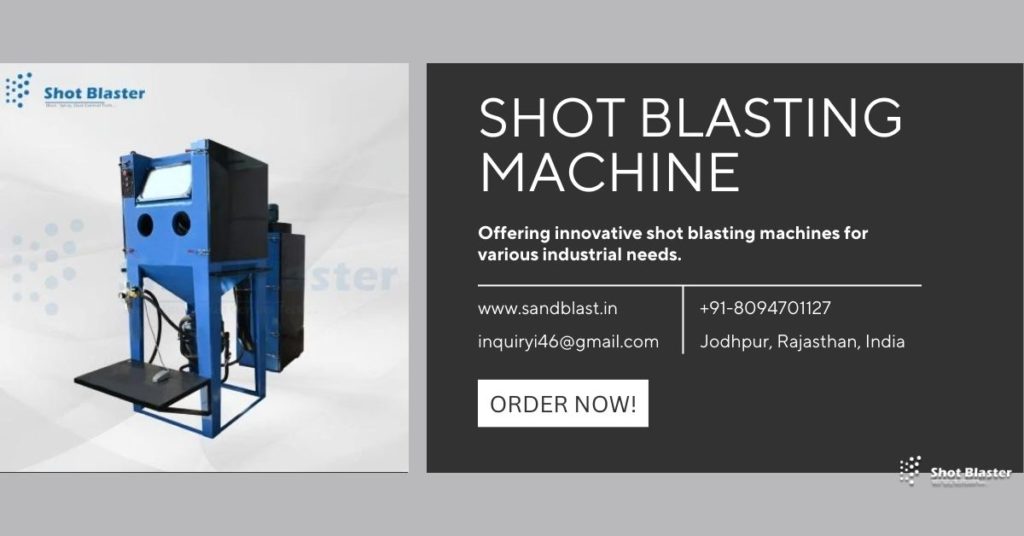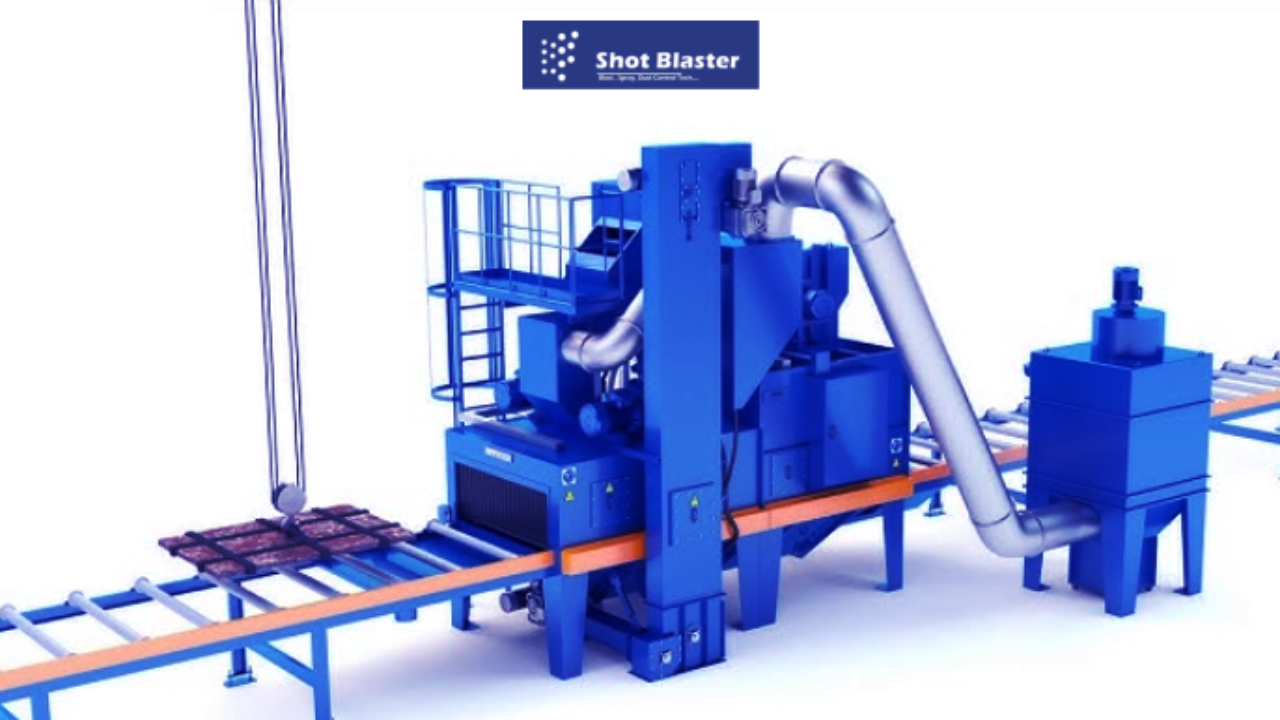Discover how to select the best abrasive for your shot blasting machine! Learn about types of abrasives, considerations for choice, and how it impacts performance. Make your shot blasting projects more efficient today!

Introduction
When it comes to shot blasting, the right abrasive can make all the difference. Whether you’re working on surface preparation, cleaning, or deburring, choosing the correct abrasive for your shot blasting machine (also known as a shot blaster) is crucial for achieving the desired results. From the material you’re blasting to the desired finish, there are several factors to consider when selecting the best abrasive for your specific application.
But with so many options out there, it can be a real challenge to figure out which one will work best. Luckily, we’ve compiled a guide to help you navigate the selection process, so you can make an informed decision and get your shot blaster running smoothly. Let’s dive into everything you need to know about how to select the best abrasive for your shot blasting machine!
Understanding Shot Blasting and Abrasives
What is Shot Blasting?
Shot blasting is a mechanical surface preparation method that involves propelling abrasive particles at high speeds against a surface to clean, smooth, or roughen it. This process is commonly used in industries like automotive, aerospace, construction, and manufacturing to prepare surfaces for coating, paint, or just for cleaning.
Types of Abrasives Used in Shot Blasting
When it comes to abrasives, the term refers to materials that help clean or prepare a surface. These materials vary widely in type, size, and hardness, and each has its advantages. Here are some of the most commonly used abrasives in shot blasting:
- Steel Shot: Steel shot is a popular choice due to its durability and effectiveness. It’s great for heavy-duty applications like cleaning and polishing metal surfaces.
- Steel Grit: Unlike steel shot, steel grit is angular in shape, which makes it ideal for more aggressive blasting tasks, like surface preparation and cleaning rusted or corroded surfaces.
- Aluminum Oxide: This abrasive is known for its versatility. It’s hard, durable, and works well on both soft and hard surfaces. It’s commonly used for blasting metal, glass, and stone.
- Glass Beads: Glass beads are ideal for creating a smooth, satin finish on materials. They are gentle and perfect for delicate cleaning tasks, often used in the automotive industry.
- Garnet: Garnet abrasives are known for their consistency and high cutting power. They are often used in projects that require precision and efficiency, such as cleaning metal or removing coatings.
- Plastic Abrasives: For lighter, less aggressive blasting, plastic abrasives are the way to go. They work well on more delicate surfaces, offering a softer blast while still providing effective cleaning.
Why Choosing the Right Abrasive Matters
Choosing the wrong abrasive can lead to inefficiencies, surface damage, or even machine malfunctions. The abrasive you select will directly influence the speed, quality, and cost-effectiveness of your shot blasting operation. Whether you’re cleaning industrial parts or prepping a surface for coating, the correct abrasive can save you both time and money in the long run.
Get the inside scoop – https://riyasingh258.blogaaja.fi/how-to-choose-the-right-shot-blasting-machine-for-your-needs/
Factors to Consider When Selecting the Best Abrasive for Your Shot Blasting Machine
Selecting the best abrasive for your “shot blasting machine” involves more than just picking a random option from a catalog. There are a few key factors to take into account, each influencing the final result. Let’s go over some of these important considerations:
1. Type of Material You’re Blasting
The first question you need to ask is: what material are you working with? Different abrasives are designed to work with specific materials.
- Steel: Use steel shot or grit when working with steel, as they are hard enough to efficiently clean or prepare the surface.
- Concrete or Stone: Garnet or glass beads can work better for surfaces like concrete or stone.
- Aluminum or Soft Metals: Lighter abrasives like aluminum oxide or plastic may be more appropriate for these materials to avoid damage.
Choosing an abrasive suited to the material you’re blasting ensures optimal results and helps you avoid unnecessary wear and tear on your machine.
2. Desired Surface Finish
The type of surface finish you need also plays a critical role in selecting the right abrasive. Some abrasives leave a rougher finish, while others are designed to create a smoother, polished appearance.
- Rough Texture: If you’re looking for an aggressive finish (such as when preparing a surface for coating), steel grit or crushed glass is a good option.
- Smooth Texture: For a smooth, satin finish, glass beads or aluminum oxide abrasives are perfect.
Knowing your desired result ahead of time can help you select the abrasive that delivers just the right finish.
3. Abrasive Hardness and Durability
The hardness of the abrasive directly impacts its performance. For example, harder abrasives, such as steel shot and aluminum oxide, are ideal for cleaning tougher materials or surfaces with heavy coatings. However, they can be more abrasive on delicate materials.
In contrast, softer abrasives (like plastic or glass beads) are more suitable for delicate surfaces, offering a gentler blast while still effectively cleaning.
check it out – https://riyasingh258.blogaaja.fi/a-complete-guide-to-understanding-shot-peening-machines/
4. Size of the Abrasive
The size of the abrasive particles affects the efficiency and finish of your shot blasting process. Larger abrasive particles tend to create a rougher texture and are more aggressive in their cleaning, while smaller particles provide a smoother finish.
- Larger Abrasives: For heavy-duty blasting tasks, such as cleaning large metal surfaces or removing thick coatings, larger abrasive particles are better.
- Smaller Abrasives: For delicate tasks, like polishing or removing fine layers, smaller abrasives like glass beads or fine aluminum oxide particles work best.
Selecting the right particle size for the job at hand can prevent unnecessary damage and help you achieve your desired result.
5. Reusability
The cost-effectiveness of abrasives largely depends on their reusability. Some abrasives, like steel shot and steel grit, can be reused multiple times before they lose their efficiency, making them an economical choice for long-term use. On the other hand, softer abrasives like glass beads tend to break down more quickly and may need to be replaced more often.
Choosing an abrasive that offers good durability and reusability is key to keeping operating costs down.
6. Environmental Impact
When selecting an abrasive, consider its environmental impact. Some abrasives are more eco-friendly than others. For example, sand, a common abrasive in the past, is now considered hazardous in many cases, while abrasives like steel shot or plastic abrasives offer a more environmentally conscious choice.
If sustainability is important to your operation, look for abrasives that are non-toxic and recyclable.
Boost efficiency with our high-performance shot blasting machines! Perfect for surface cleaning & preparation. Explore now for the best deals & quality!
How to Select the Best Abrasive for Your Shot Blasting Machine: The Process
Now that you know the key factors to consider, here’s a step-by-step guide to help you choose the best abrasive for your shot blasting machine.
Step 1: Assess the Material to Be Blasted
Start by identifying the material you’re working with and its condition. Are you cleaning steel, aluminum, or something else? Are you removing rust, old coatings, or prepping the surface for painting? This step will help you narrow down the abrasive options.
Step 2: Define Your Desired Finish
Think about the end result you want. Do you need a smooth, polished surface or a rough texture? Knowing this will guide you toward the appropriate abrasive, as different abrasives yield different finishes.
Step 3: Choose the Right Abrasive Based on Performance
Based on the material and finish you need, choose the abrasive that fits. Consider durability, hardness, and particle size to find the right match.
Step 4: Test and Adjust
Once you’ve selected an abrasive, run a few test blasts on a small section to ensure the abrasive performs as expected. If you’re not satisfied with the results, tweak your choice of abrasive until you find the best fit.
FAQs
What happens if I use the wrong abrasive for my shot blaster?
Using the wrong abrasive can lead to ineffective cleaning, surface damage, or even equipment malfunctions. Always match the abrasive to the material and finish required.
How often should I replace the abrasive in my shot blaster?
The lifespan of an abrasive depends on its type and reusability. Steel shot and grit last longer than softer abrasives like glass beads, which break down more quickly. Monitor the abrasive for wear and replace it when necessary.
Can I use the same abrasive for different materials?
While some abrasives, like aluminum oxide, are versatile and can work on various materials, it’s always best to choose abrasives specifically designed for the material you’re blasting. This ensures the best results and extends the life of your shot blaster.
Conclusion
Choosing the right abrasive for your hanger type shot blasting machine is crucial for achieving the desired surface finish and ensuring the efficiency of your operation. By understanding the different types of abrasives available and considering factors like material, desired finish, hardness, and reusability, you can select the best abrasive for your specific needs.
With the tips and insights we’ve shared in this guide, you’ll be well on your way to optimizing your shot blasting process. So, take the time to evaluate your options and make a smart choice—your shot blaster (and your bottom line) will thank you for it!



Leave a Reply